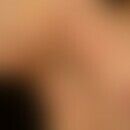Synonym(s)
HistoryThis section has been translated automatically.
Antoine 1929; Witt et al. 1986
DefinitionThis section has been translated automatically.
The autosomal dominant or autosomal recessive inherited, very rare (described are < 50 children) already in utero or shortly after birth lethal syndrome of the "restrictive dermopathy" is caused by an autosomal recessive inherited mutation of a zinc metal proteinase (ZMPSTE24) which is encoded by the gene of the same name localized on chromosome 1p34.
A second autosomal dominant mutation, which leads to an identical phenotype, concerns the LMNA gene (1q21.1), which codes for lamin A (Matulevičienė A et al. 2016). ZMPSTE24- mutations predominate (Matulevičienė A et al. 2016).
You might also be interested in
Occurrence/EpidemiologyThis section has been translated automatically.
Prevalence: <1 / 1 000 000
EtiopathogenesisThis section has been translated automatically.
In the fibroblasts, the expression of the collagen-binding alpha-1 and alpha-2 subunits of integrin is increased. Since integrins have an important function in tissue differentiation, this finding was interpreted as a consequence of a disturbed differentiation of the skin.
ManifestationThis section has been translated automatically.
Prenatal, newborn
ClinicThis section has been translated automatically.
Clinically significant in intrauterine growth-retarded fetuses are contractures caused by a too "tight skin", which leads to a fixation of the fetus in a flexed position. Also in the face, the tight skin leads to a narrow, pointed nose, a small mouth, limited mobility of the lower jaw which is too small and to entropy of the eyelids. Despite its tightness, the skin is usually thin with a translucent relief of veins, but in places it is also thickened and sclerotic (Bidier M et al. 2018).
The auricles are malformed, deeply set and close fitting to the scalp. Eyebrows and lanugo hair are missing, while the scalp hair may be normal.
Specific visceral symptoms are not described.
Other symptoms are:
multiple joint contractures and a rigid, tight skin, slightly abrasive, with fissures in the armpits and neck
hypoplastic lungs
Choanal atresia, cleft palate, narrow eyelids, hypospadias, double uterus, kyphoscoliosis of BWS, adrenal hypoplasia
Heart defects (open ductus totalli or atrial septum defect) and intracranial calcifications (Chohan O et al. 2016).
ImagingThis section has been translated automatically.
Radiologically, rocking chair feet, thin and dysplastic collarbones, ribbon-shaped ribs, tubular long bones of the arms and poorly mineralized skull bones stand out.
HistologyThis section has been translated automatically.
Thin dermis, collagen fibres parallel to the surface, reteleistes are missing, reduction of elastic fibres.
Progression/forecastThis section has been translated automatically.
Children die already in utero or immediately post partem
LiteratureThis section has been translated automatically.
- Bidier M et al (2018) Restrictive Dermopathy: Four Case Reports and Structural Skin Changes. Acta Derm Venereol 98:807-808.
- Chohan O et al (2016) Restrictive Dermopathy: A Rare Disease with Unusual Radiographic Findings. Del Med J 88:308-310.
- Matulevičienė A et al. (2016) Frame shift mutations of the ZMPSTE24 gene in two siblings with restrictive dermopathy. Clin dysmorphol 25:7-11.
Outgoing links (1)
Zmpste24;Disclaimer
Please ask your physician for a reliable diagnosis. This website is only meant as a reference.




